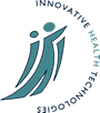The challenge of recent neurology to conceptions of mental and physical illness
Abstract
This research aims to investigate how brain imaging techniques may be constituting
a new way in which neuroscience defines normal brain function and specific
mental illnesses. Advancing visualisation technologies are likely to have
consequences not only for how the brain is conceived and represented, but
also for the much broader understandings people have of the mind and body:
Scientific studies claiming to establish average, or typical, cognitive
function is likely to influence the way in which normal behaviour is understood,
while in clinical settings the ability to locate and identify neurological
disorders is already having an impact on how certain conditions are perceived,
not only medically, but also socially. In particular, the research will
examine how these techniques may be altering the ways in which non-experts
construct central cultural ideas and how this may eventually impact on their
conception of self.
Anthropological fieldwork, consisting of direct observation and interviews,
will be based at key medical imaging laboratories in London, paralleling
a number of different medical and cognitive research projects. The researchers
will spend a year mixing with the experts and volunteers, talking to them,
watching them, and so identifying the many cultural assumptions and motifs
that accompany even the most specialised scientific practice. The research
will consequently serve both as an ethnography of science, and as an investigation
into non-experts' ideas about the images, about what is normal, what is
mental illness, and how ideas about the brain are currently conceptualised.
Summary
Background
Extraordinary technological advances in brain scanning have led to the
last ten years being heralded as the 'Decade of the Brain'. For the very
first time in the history of medicine not only the intricate structure,
but also the living brain's function, its actual working, is beginning to
be mapped in detail. The media is now flooded with brain images, reporting
claims that the site for one behavioural characteristic or another has just
been discovered. Feature films and documentaries alike extol the wonders
of this new technology, implying that it is gaining access to the very essence
of what it is to be human.
This research aims to investigate some of the cultural dimensions around
ideas of the brain and neuroscience as they are being developed. Advancing
visualisation technology is likely to have consequences not only for how
the brain is conceived and represented, but also for the much broader understandings
people have of the mind and body. Scientific studies claiming to establish
the average or typical cognitive function is likely to influence the way
in which normal behaviour is understood, while in clinical settings the
ability to locate and identify neurological disorders is already having
an impact on how certain conditions are perceived, not only medically, but
also socially.
Research Design
Anthropological fieldwork, consisting of direct observation and interviews,
will be based at key medical imaging laboratories in London, paralleling
a number of different medical and cognitive research projects. The researchers
will spend a year mixing with the experts and volunteers, talking to them,
watching them, and so identifying the many cultural assumptions and motifs
that accompany even the most specialised scientific practice. The research
will consequently serve both as an ethnography of science, and as an investigation
into non-experts' ideas about the images, about what is normal, and how
ideas about the brain are currently conceptualised.
The project's chief aim, therefore, will be to compare the challenge of
this new knowledge to existing conceptual models amongst specialists, people
with specific illnesses, such as depression and schizophrenia, and healthy
volunteers. The key question addressed will be what possible impact this
may have on the traditional distinctions between mental and physical illness.
Through this, the social and cultural consequences of the new technology
will be examined, and the impact it is already having on people's sense
of illness, self and body.
Policy and Academic Implications
By discovering some of ways this technology is being differently understood by groups of people, this research will provide detailed illustrations of some of the key themes of the Programme. In addition, findings will be reported back to scientists and clinicians, so that they can hear how their work is having social, as well as medical, ramifications. And finally, health organisations representing those specific illnesses under study will be approached, with a view to jointly developing appropriate resources of information in the future for people making enquiries, or who have fears and concerns or about these developing medical techniques
Contacts
Outputs
Research Findings
Findings are available here - pdf
News
No news

